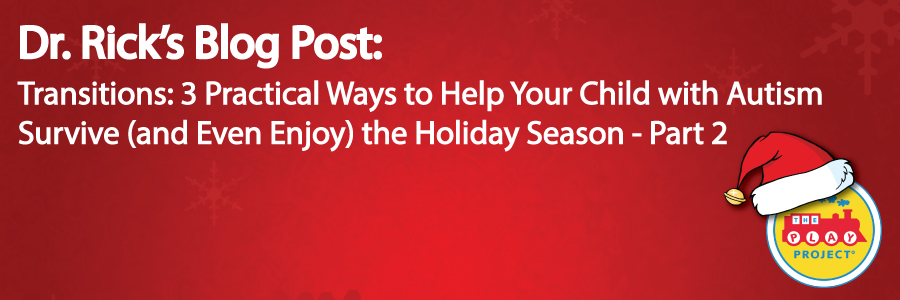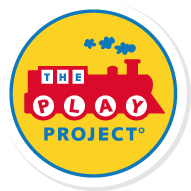
Written by Richard Solomon, MD
Part 2:
Last week I explained why holidays can be so hard for children on the autism spectrum and I discussed the importance of “Planning for the Worst” (see last week’s post here).
#2. Keep the micro environment familiar and rewarding. Create a familiar “micro-environment,” a protective bubble, around your child. If your child can understand schedules, create a daily holiday schedule on paper, on iPad, or in pictures so the child knows what’s coming next. Give advance notice (not too far in advance) so there are no sudden, unexpected changes. Use little rewards (food or prizes—stickers, match box cars, little collectibles) to motivate: “When we get to the restaurant I’ve got a prize for you.” Make sure you travel with all the familiar easy-to-move objects including electronics (iPad, iPhone), videos, YouTube, favorite music with headphones, familiar clothes, blanket (‘blanky’), pillows, stuffed animals, comfort food/snacks, and perhaps most importantly familiar people. Plan on it.
#3. Mirror back the child’s feelings Throughout all the transitions there are going to be lots of feelings of anxiety, not wanting to go places, need for control, even panicky moments. I’m a big fan of “mirroring the child’s feelings” by telling them (not asking them) how they feel. When the child indicates gesturally or says, “No car. No Grandma. Stinky Grandma.” Typically, parents will say things like: “But you love Grandma’s and it’s going to be fun.” But that would not be acknowledging the child’s feelings. Instead say: “You don’t want to go in the car to Grandma’s. It’s stinky at Grandma’s, so many smells. I know.” The child will feel heard and this usually calms the child down immediately.
What about the repeated “OCD Question” (usually from the child with high anxiety and high functioning autism)? “Why are we going to Grandma’s? Why are we going to Grandma’s?” A hundred times! Parents typically say: “We’re going to Grandma’s for Thanksgiving.” But the child doesn’t stop because he is not really asking a question; he’s saying: “I don’t want to go to Grandma’s.” Again, mirror the child’s feeling: “I know. It’s noisy at Grandma’s; there are lots of new people there. It’s hard.” If you are right, the child will say “Yeah,” the universal response to mirroring feelings accurately. Then say, “I know, it’s hard at Grandma’s; but we’re going to have a special, quiet room for you to watch your favorite movies.” Often this will stop the OCD questions. When you recognize feelings related to transitions, upsets will decrease. Plan on it.
Just remember: If you’re fighting and yelling you’re doing something wrong. By being prepared for the worst, creating a micro-environment, and mirroring feelings you will be able to keep your frustration levels low and retain your sense of humor to give your children a message that the holidays can be a fun, that the holidays will be fun. Plan on it!
If you missed Part 1 of this Blog post, click here
For more ideas on ways to make transitions easier, check out The PLAY Project’s mini-course on this topic (link) and Dr. Rick’s book called Autism: The Potential Within where you will find the chapter called “Dr. Rick’s 20 Transition Tricks.”
